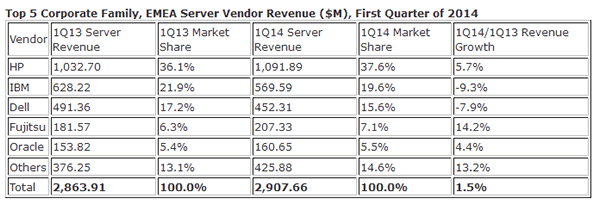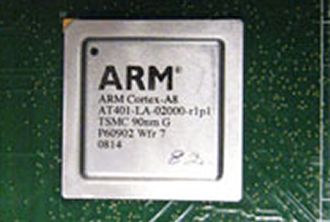 HP has announced the latest in Project Moonshine, which CEO Meg Whitman said in a web conference should be a shift in the way servers handle data. It may also be a shift away from X86.
HP has announced the latest in Project Moonshine, which CEO Meg Whitman said in a web conference should be a shift in the way servers handle data. It may also be a shift away from X86.
If nothing is done to address core infrastructure problems, Whitman said, infrastructure could be something that actually holds back the development of the web instead of enabling it. “It’s not just about cellphones and tablets connected to the internet but millions of sensors collecting data,” she said, machines talking to machines, and generating not petabytes but brontobytes of data.
Project Moonshine, Whitman promised, would not be jailhouse toilet booze but a “multiyear” and “multi phased” program to shape the future of data centres – as the current path we’re on is “not sustainable from a space, energy and cost perspective”. Using years of HP Labs research, Whitman and HP Moonshine will hel create “the foundation for the next 20 billion devices”.
In a webcast, HP’s Dave Donetelli mentioned the proof of concept for Moonshine which was unveiled in 2011, and since HP roped in 50 beta customers to thoroughly develop and test its various iterations. Now, HP has given the world the second gen Moonshine servers, which it claims are based on the concept of the ‘software defined server’ – that is, specifically with internet scaled workloads in mind, and designed for the software that needs to run on it.
Donetelli said the servers address Space, Energy, Cost, and Complexity (SECC). By which he means there’s less of all of the above.
The Moonshot 1500 enclosure, Donetelli points out, can hold 45 Moonshot servers, and compared to the traditional ProLiant server, it uses up to 80 percent less energy, 80 percent less space, and is 77 percent cheaper. Customers, then, will be able to build better revenues from a smaller footprint for less cash. These servers run on the Intel Atom s1200, though partners like AMD, Applied Micro, Texas Instruments and Calxeda are all bringing in new chipsets – which HP hopes will provoke market competition and more innovation.
Targeting big data, high performance computing, gaming, financial services, facial recognition, video analysis and other stuff, Donetelli promised that the portfolio of the servers will grow – and at a quicker rate thanks to the competition between its partners as it’s not tied to an 18 to 24 month chip cycle.
Partners will be able to, and encouraged to join the Pathfinder Innovation Ecosystem, or P.I.E., including operating system developers and software vendors.
Donetelli said this announcement is not an “incremental change” but a “new class of servers designed for the data centre”.
When asked if these will replace X86 servers, an HP spokesperson said PCs were the high volume product at that time, today things that people buy in high volume are smartphones and tablets. A transition from Unix to X86 took time, and HP believes a transition from X86 to Moonshot will take time. “X86 will be here for a very long time, but Moonshot will be here for a long time,” the spokesperson said.
Analyst Patrick Moorhead said that the developments are positive because the servers of today aren’t ready for the explosion in data driven by future trends such as the all-singing all dancing totally connected internet of things.
The first Moonshot server is shipping today in US & Canada and will be available to channel partners around the world next month.
 In one of those strange twists of fate that dog the semiconductor industry, it appears X86 giant Intel is now one of the biggest licensees of ARM tech on the planet, now it is a foundry business. ARM, of course, offers an advantage over X86 servers in terms of both functionality and heat. Intel is considerably boosting ARM revenues, according to well informed sources close to the facts.
In one of those strange twists of fate that dog the semiconductor industry, it appears X86 giant Intel is now one of the biggest licensees of ARM tech on the planet, now it is a foundry business. ARM, of course, offers an advantage over X86 servers in terms of both functionality and heat. Intel is considerably boosting ARM revenues, according to well informed sources close to the facts.















